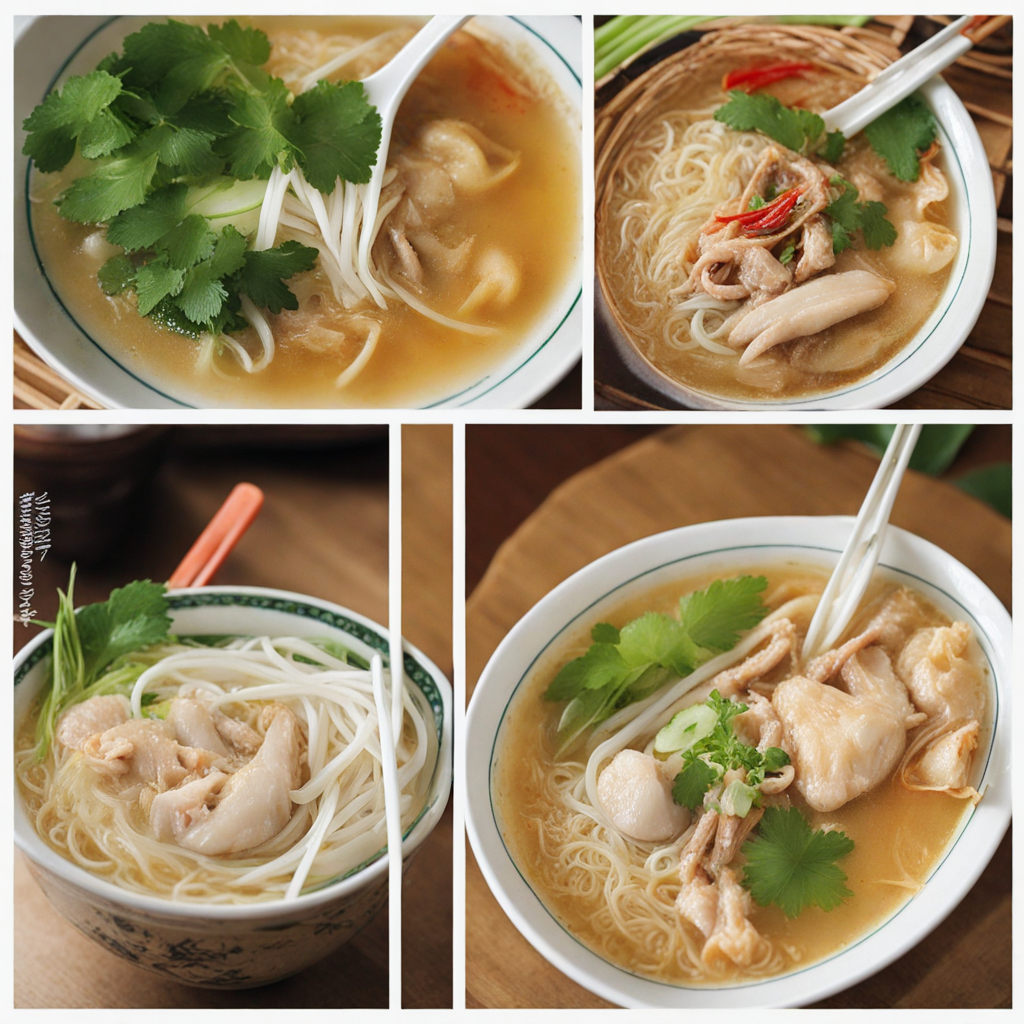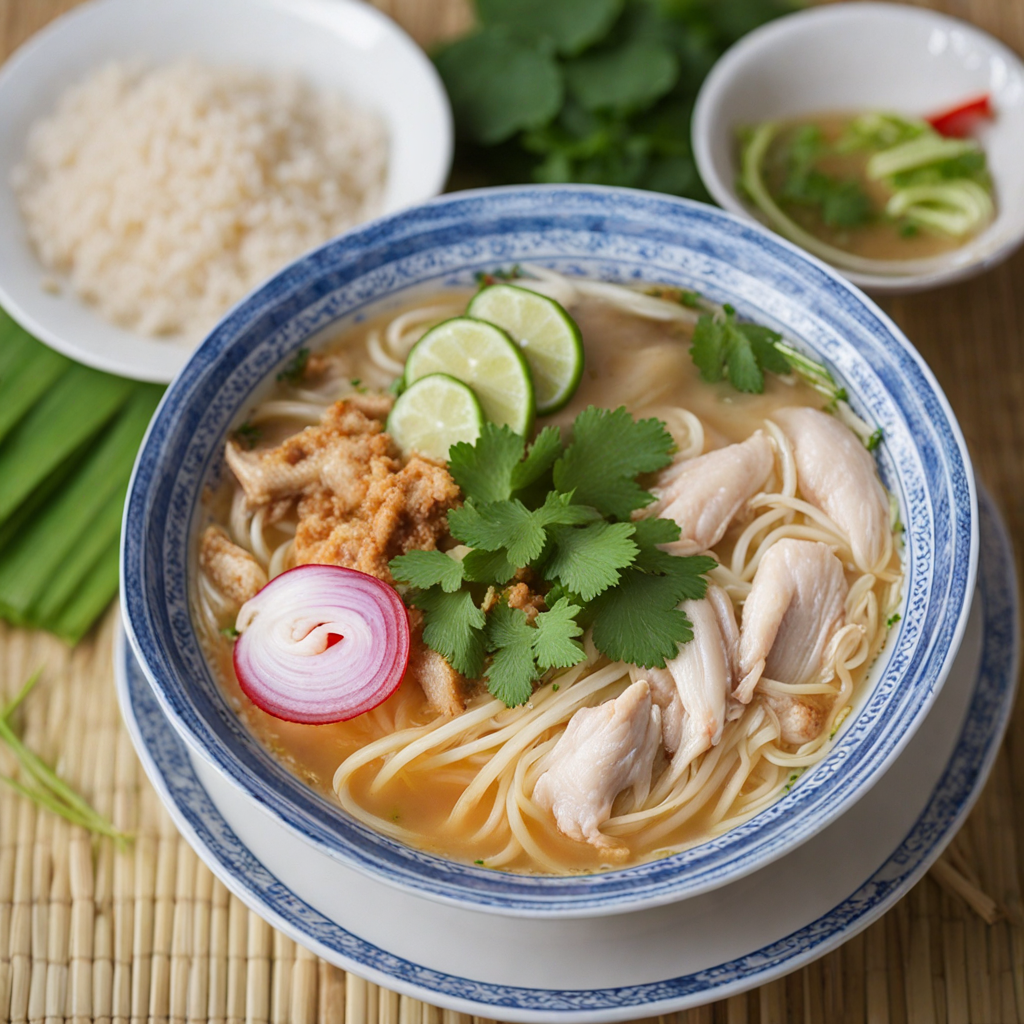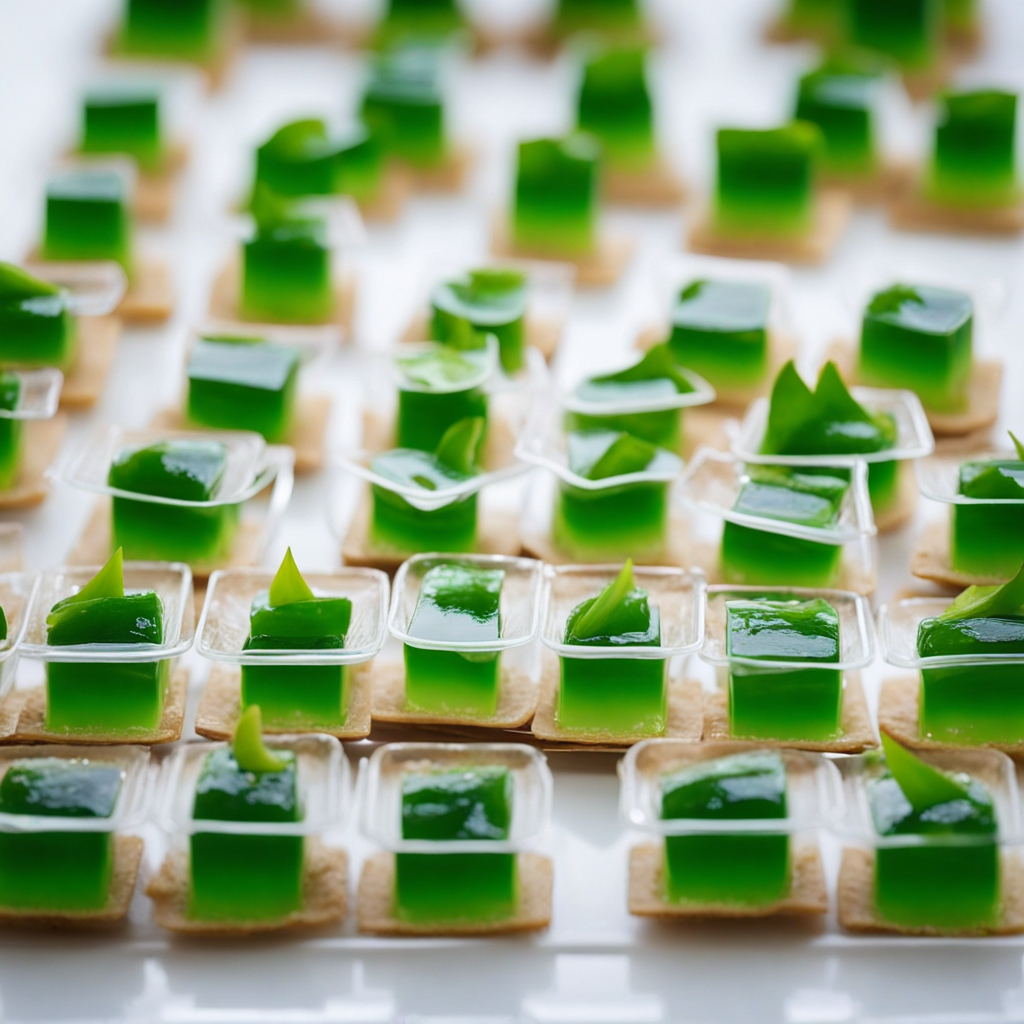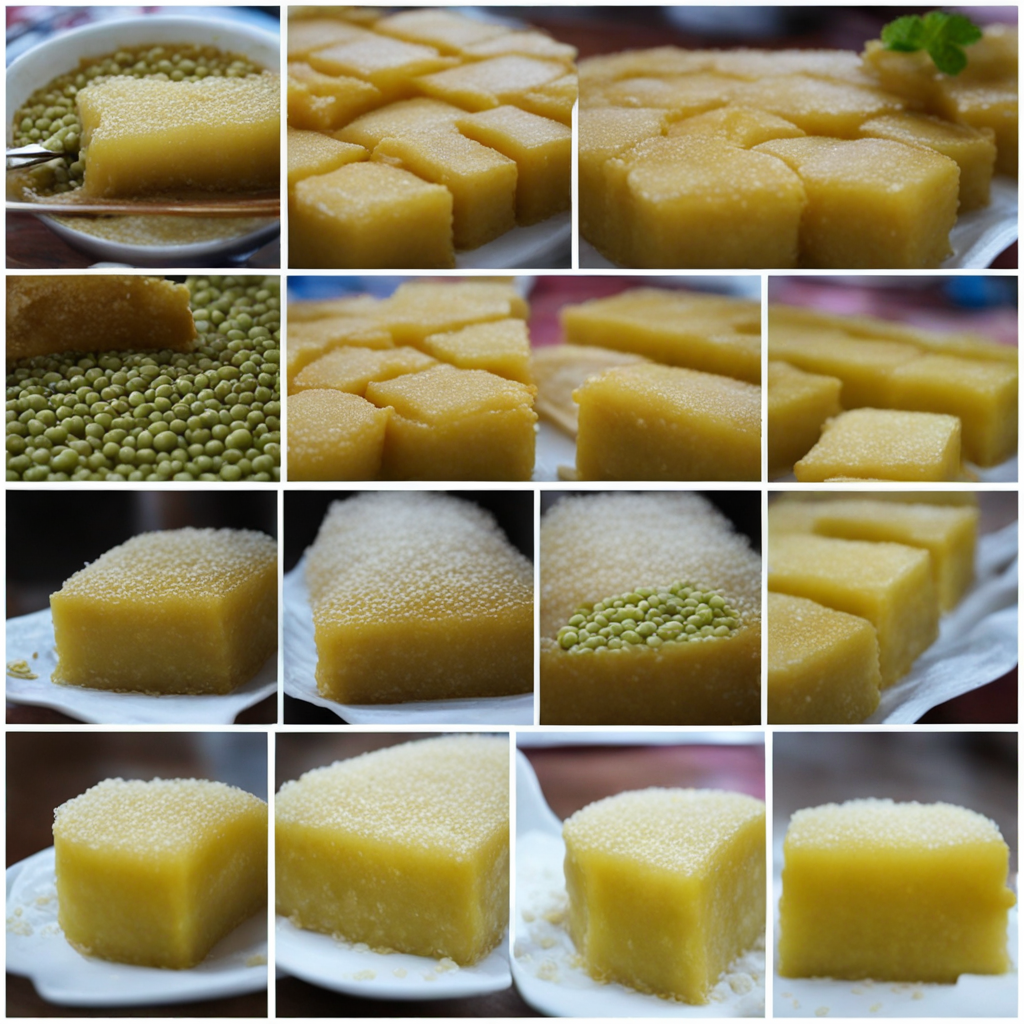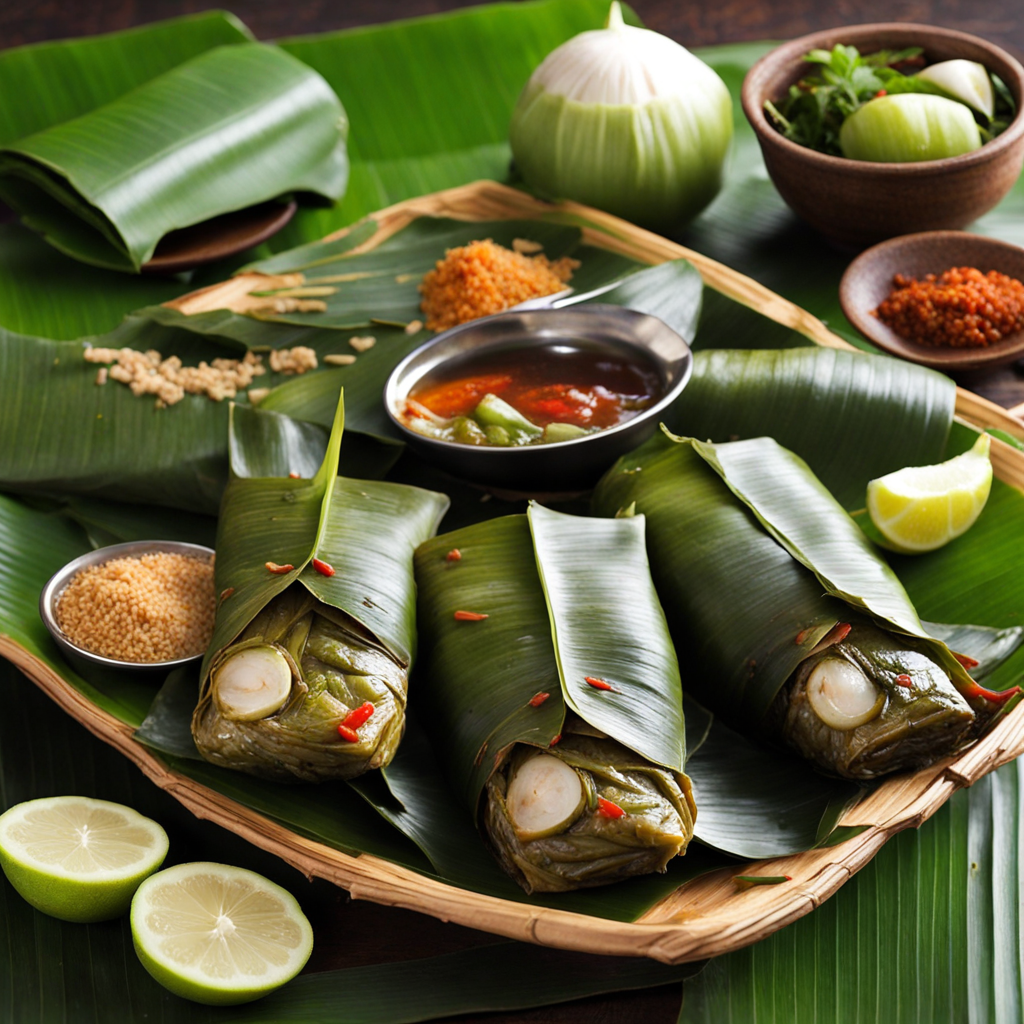Khao Piak Sen
Khao Piak Sen is a delightful Laotian noodle soup that offers a unique and comforting experience for those seeking to explore new flavors. The dish features handmade rice noodles that are thick and chewy, providing a satisfying texture that pairs beautifully with the rich broth. Typically, the broth is made from a combination of chicken or pork bones, simmered for hours to extract deep flavors, and infused with aromatic herbs like lemongrass and galangal. This results in a soup that is both fragrant and savory, enveloping the noodles in a warm embrace that warms the soul. The garnishes play a crucial role in elevating Khao Piak Sen. Commonly, the dish is topped with shredded chicken or pork, fresh cilantro, green onions, and a squeeze of lime for a burst of brightness. The addition of fried garlic adds a delightful crunch, while chili flakes or fresh chilies can be included for those who enjoy a spicy kick. Each ingredient contributes to a harmonious balance of flavors and textures, making each bite an adventure in taste. This comforting dish is often enjoyed as a breakfast staple in Laos, but its appeal transcends any specific meal time. Whether savored on a chilly morning or as a satisfying dinner, Khao Piak Sen captures the essence of Laotian cuisine—simple yet profound. The layered flavors and satisfying textures make it a wonderful choice for anyone looking to expand their culinary horizons and experience the heartwarming essence of Laos.
How It Became This Dish
Origin of ເຂົ້າປຽກເສັ້ນ ເຂົ້າປຽກເສັ້ນ, known as sticky rice or glutinous rice, is a fundamental staple in Laotian cuisine, tracing its origins back thousands of years. This traditional dish is made from a specific variety of rice called 'glutinous rice' or 'sweet rice,' which is characterized by its high starch content and sticky texture when cooked. The cultivation of glutinous rice in Laos can be linked to the early agricultural practices of the Laotians, who have been farming these crops since prehistoric times. Historical evidence suggests that rice farming in Southeast Asia began around 3000 BCE, making it one of the oldest agricultural practices in the region. The importance of sticky rice is not merely nutritional; it is interwoven with the identity and culture of the Laotian people. The cultivation of rice, especially sticky rice, is deeply rooted in the agricultural calendar and rituals, marking the cycle of life, seasons, and community bonding. The traditional methods of planting, harvesting, and preparing sticky rice have been passed down through generations, creating a cultural legacy that is celebrated in festivals and everyday life. \n\n Cultural Significance In Laotian culture, sticky rice is more than just a food item; it is a symbol of unity and identity. It is often referred to as 'ຂະແກງ' (khay), which translates to 'the food of the people.' Sticky rice is traditionally consumed at every meal and is especially significant during communal gatherings, festivals, and ceremonies. It serves as a centerpiece in many Laotian dishes and is often paired with various types of meat, vegetables, and dipping sauces. One of the most notable cultural expressions involving sticky rice is the annual Boun Pi Mai, or Lao New Year, when families come together to prepare and share traditional dishes. Sticky rice is shaped into small balls, often served alongside a variety of savory and sweet dishes, representing abundance and prosperity. Additionally, it plays a vital role in religious ceremonies and merit-making practices, where sticky rice is offered to monks and the spirits, showcasing respect and gratitude. \n\n Development Over Time As Laos underwent various historical changes, including colonial influences and modernization, the role of sticky rice has evolved while retaining its cultural significance. During the French colonial period in the late 19th and early 20th centuries, Western-style foods began to make their way into Laotian kitchens, yet sticky rice remained a steadfast part of the local diet. The French introduced bread and pastries, but they could never replace the deep-rooted love for sticky rice. In contemporary Laos, sticky rice continues to be a staple food that resonates with both the rural and urban populations. While traditional methods of soaking, steaming, and serving sticky rice are still prevalent, modern culinary innovations have also emerged. Street food vendors in urban areas often serve sticky rice with a variety of contemporary toppings, combining traditional flavors with modern tastes. For example, sticky rice is now frequently paired with grilled meats, spicy salads, and even fusion dishes that incorporate international flavors. \n\n Regional Variations Different regions of Laos showcase unique variations in the preparation and consumption of sticky rice. In the north, particularly in the mountainous areas, it is often served with grilled meats and fresh herbs, highlighting the region's rich biodiversity. The people of Luang Prabang, a UNESCO World Heritage site, have also developed their own traditional dishes that revolve around sticky rice, such as 'khao poon,' a spicy rice noodle soup. In contrast, southern Laos introduces a more tropical flair, where sticky rice might be served with coconut-based dishes, reflecting the influence of the Mekong River and the lush landscapes. The southern cuisine often incorporates a variety of fruits and vegetables that enhance the flavor profiles of sticky rice, creating a vibrant culinary tapestry. \n\n Global Recognition In recent years, the international culinary world has started to recognize the significance of Laotian cuisine, particularly the versatility of sticky rice. As globalization brings cultures closer together, foods like ເຂົ້າປຽກເສັ້ນ have found their way onto the menus of restaurants around the world. Chefs and food enthusiasts alike are captivated by its unique texture and ability to complement a wide array of dishes, from savory to sweet. Moreover, sticky rice has become a symbol of culinary authenticity, representing the rich heritage of Laos. Food festivals and culinary events increasingly feature sticky rice, celebrating its place in Laotian culture and inviting people to explore the diverse flavors and dishes that stem from this beloved ingredient. \n\n Conclusion: A Living Tradition The history of ເຂົ້າປຽກເສັ້ນ is a testament to the resilience and adaptability of Laotian culture. As it continues to be an integral part of daily life, sticky rice embodies the connection between the past and the present. It serves as a reminder of agricultural traditions, communal bonds, and the evolving nature of food. Whether enjoyed in a rural village or a contemporary urban setting, sticky rice remains a cherished staple that unites the Laotian people and invites the world to partake in their rich culinary heritage. Through each grain of sticky rice, the stories of generations past and present are preserved, creating a living tradition that will endure for years to come.
You may like
Discover local flavors from Laos


